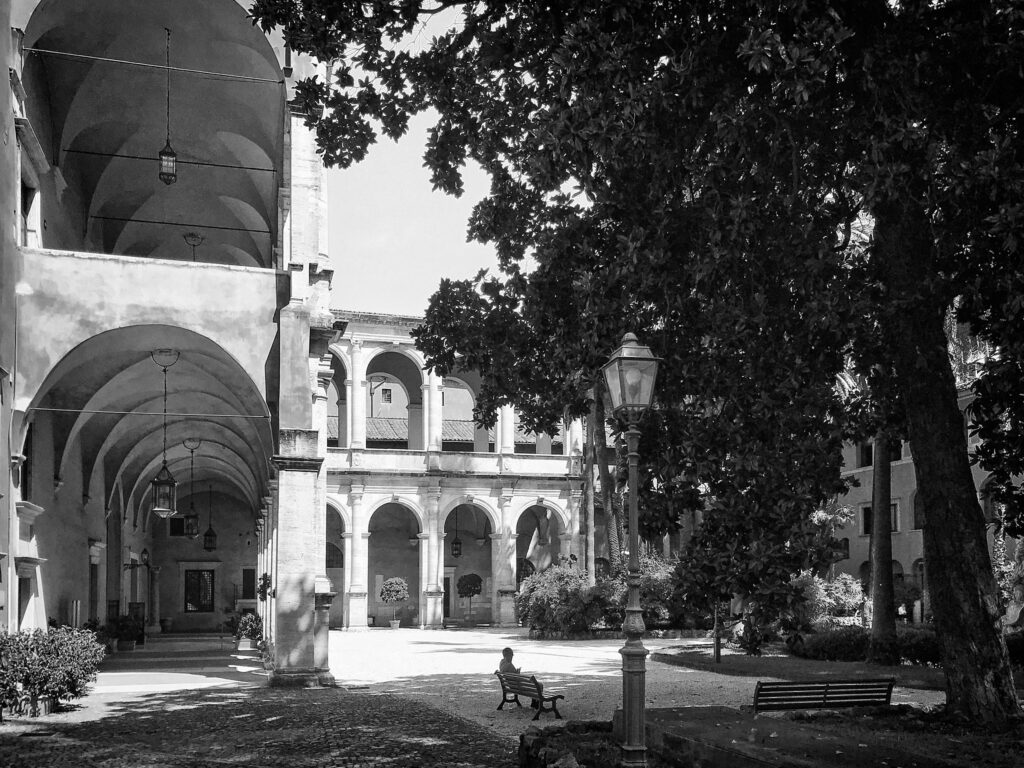
Image above: Courtyard in Rome, 2019, Jan Eckert.
La Grande Bellezza
Rome’s sublime beauty creates moments of temporal suspension within urban rush. While the city’s aesthetic power compels contemplative pause through its «grande bellezza», increasing tourist pressure and climate stress challenge these transcendent qualities. This creates a fundamental tension between the preservation of aesthetic experience and the management of urban intensity.
Post-Efficiency Transformation
Rome’s aesthetic power naturally creates zones where beauty overrides efficiency-driven patterns. From ancient ruins to baroque piazzas, the city’s layered architecture compels contemplative presence through its «grande bellezza», while sustaining the famous «dolce vita lifestyle» demonstrates how the experience of beauty can generate alternative temporal rhythms beyond productivity metrics.
Intergenerational Dynamics
Daily rituals, from the morning market to nighttime passeggiata, create environments that support intergenerational exchange through shared experience. These spaces demonstrate how urban beauty fosters urban experiences across age groups, while traditional patterns such as neighbourhood gatherings enable knowledge transfer through collective appreciation of place.
Climate Resilience
The Eternal City’s sophisticated historical approaches to seasonal living demonstrate how climate adaptation can enhance, rather than compromise, urban beauty and cultural practices. But the twin pressures of climate change and overtourism pose new challenges to Rome’s open spaces and traditional patterns of use. The city must find a balance between preserving its aesthetic power and cultural rhythms, and managing increased environmental stress and visitor intensity.
